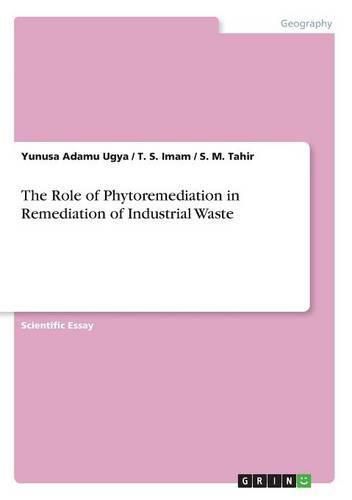Readings Newsletter
Become a Readings Member to make your shopping experience even easier.
Sign in or sign up for free!
You’re not far away from qualifying for FREE standard shipping within Australia
You’ve qualified for FREE standard shipping within Australia
The cart is loading…






Scientific Essay from the year 2016 in the subject Geography / Earth Science - Physical Geography, Geomorphology, Environmental Studies, language: English, abstract: This text summarizes the role of phytoremediation in the remediation of industrial waste water since this waste water has become a threat to water quality. Several technologies are available to remediate water that is contaminated by industrial pollutant. However, many of these technologies are costly (e.g. excavation of contaminated material and chemical/physical treatment) or do not achieve a long-term nor aesthetic solution. Phytoremediation can provide a cost-effective, long-lasting and aesthetic solution for remediation of contaminated sites. In many cases, especially in tropical or subtropical areas, invasive plants such as the water hyacinth (Eichhornia crassipes) and water lettuce (P. stratiotes L.) are used in these phytoremediation water systems. This is because, compared to native plants, these invasive plants show a much higher nutrient removal efficiency with their high nutrient uptake capacity, fast growth rate, and big biomass production. In the active growth season, for instance, water hyacinth plants can double in number and biomass in 6 to 15 days. This study shows the importance of phytoremediation in the phytoremediation of industrial waste.
$9.00 standard shipping within Australia
FREE standard shipping within Australia for orders over $100.00
Express & International shipping calculated at checkout
Scientific Essay from the year 2016 in the subject Geography / Earth Science - Physical Geography, Geomorphology, Environmental Studies, language: English, abstract: This text summarizes the role of phytoremediation in the remediation of industrial waste water since this waste water has become a threat to water quality. Several technologies are available to remediate water that is contaminated by industrial pollutant. However, many of these technologies are costly (e.g. excavation of contaminated material and chemical/physical treatment) or do not achieve a long-term nor aesthetic solution. Phytoremediation can provide a cost-effective, long-lasting and aesthetic solution for remediation of contaminated sites. In many cases, especially in tropical or subtropical areas, invasive plants such as the water hyacinth (Eichhornia crassipes) and water lettuce (P. stratiotes L.) are used in these phytoremediation water systems. This is because, compared to native plants, these invasive plants show a much higher nutrient removal efficiency with their high nutrient uptake capacity, fast growth rate, and big biomass production. In the active growth season, for instance, water hyacinth plants can double in number and biomass in 6 to 15 days. This study shows the importance of phytoremediation in the phytoremediation of industrial waste.